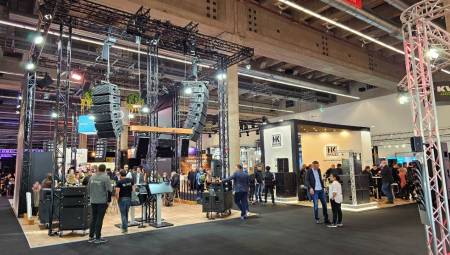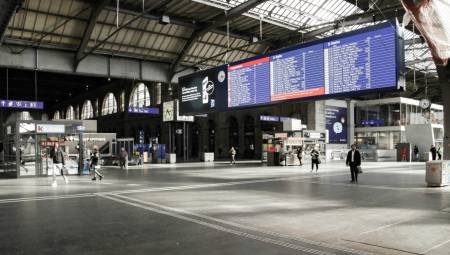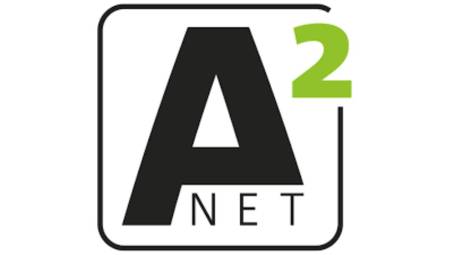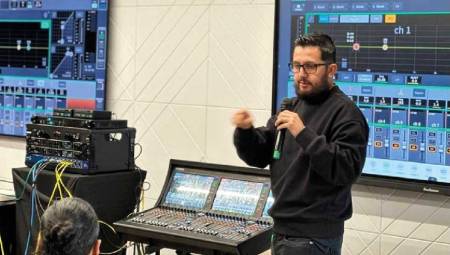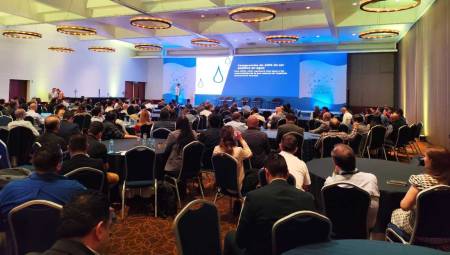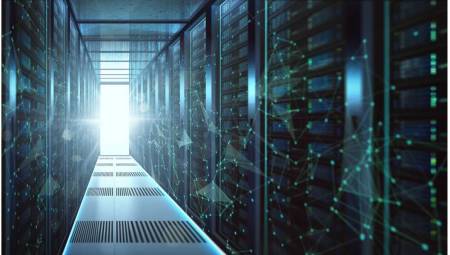 Latin America. Six trends for data center infrastructure in 2017 identified the company Vertiv, which bring together the trend of migrating to the cloud, technical management and security, among others.
Latin America. Six trends for data center infrastructure in 2017 identified the company Vertiv, which bring together the trend of migrating to the cloud, technical management and security, among others.
Gary Niederpruem, global vice president of marketing and strategy at Vertiv, said, "This year we are focusing on technological advances in critical infrastructure, which will make it easier for corporate data centers, at the edge of the network, in co-locations or in the cloud to adapt to changes in 2017 and beyond."
Here are the six trends that will shape the data center environment in 2017:
1. Infrastructure is rushing to keep pace with connectivity at the edge of the network
Distributed information technologies and the Internet of Things (IoT) are pushing IT resources closer to users and industrial processes. Although the core of data centers remains in offering services and applications, such as points of sale and inventory management, network cabinets and micro data centers continue to grow in quantity and importance.
This is due to the increase in sensors and devices connected to the internet and the fact that remote users demand faster access to information. To respond to these changes, organizations will leverage pre-configured micro data centers, as they can be deployed quickly, increase standardization, and enable remote management of multiple distributed IT locations. Standardization and modularity become just as important in distributed IT locations as they are in large data centers.
Existing network cabinets and remote IT locations will also be re-evaluated. This is to ensure that the power and cooling resources are adequate to meet the criticality of these facilities, as they begin to offer localized collection and data analysis in real time thanks to connected devices and sensors.
2. Thermal management is increasingly an ally of sustainability
Data center cooling has changed more in the past five years than any other system in the industry. Driven by a desire to reduce energy costs, traditional approaches that focused on achieving "maximum cooling" were displaced by more sophisticated approaches to remove heat as efficiently as possible. The increased use of advanced technologies in economizers and the continued evolution of smart thermal controls have enabled resilient thermal management strategies to support PUE (energy use effectiveness) below 1.2.
Now, while energy efficiency remains a concern, water and coolant consumption have emerged as important considerations in some geographies. Thanks to the wide range of thermal management strategies available today, data center operators are designing their air conditioning system based on their data center location and resource availability. Global market trends show an increase in the use of new technologies that take advantage of evaporative and adiabatic cooling, which harness water to cool the surrounding air. These technologies offer a very efficient, reliable and economical thermal management.
In places where water costs and availability are a concern, waterless air conditioning systems are gaining traction. A traditional open-loop ice water system uses approximately 15 million liters of water to cool a 1MW facility in a year. New pumped coolant economizer technologies, which do not use water or introduce external air into the data center, will save nearly 4 billion liters of water in North America in 2016.
3. Cybersecurity Reaches Maximum Criticality for Data Center Managers
The Ponemon Institute's 2016 study on the costs of data center outages revealed that cyberattacks were responsible for 22 percent of critical facility outages.
As more devices are connected to facilitate management and eventual automation, threat vectors also increase. Data center professionals are adding security to their growing list of priorities and are beginning to look for solutions that help them identify vulnerabilities and improve response to attacks. Management gateways that consolidate data from multiple devices to support DCIM (Data Center Infrastructure Management) are emerging as a potential solution. With some modifications, these can identify unsecured ports on critical infrastructure and provide early warning of denial-of-service attacks.
4. DCIM proves its value
DCIM's value continues to grow, due to the challenges it solves and its ability to manage the complex data center ecosystem. Forward-thinking operators use DCIM to solve data center challenges such as regulatory compliance, Information Technology Infrastructure Library (ITIL), and hybrid environment management. Finally, colocation providers found that DCIM is a valuable tool for analyzing costs per customer and offering their customers remote visibility into their assets.
DCIM has emerged as the forerunner of IIoT in data centers as it delivers facility visualization, increases system coordination, and supports automation – the core of the IIoT value proposition.
5. There are alternatives to lead-acid batteries
New solutions are emerging for the weaker link of power systems in data centers as operators look to reduce the space, weight and total cost of traditional lead-acid regulating valve (VRLA) batteries. The most promising of the solutions are lithium batteries. The prices of these continue to decrease and the chemistry and construction continue to advance. Therefore, lithium batteries are becoming a viable option for data centers and are being adapted to room and queue requirements. Although this battery technology was already available, cost improvements have increased commercialization in the data center industry.
Data center operators have long been interested in alternatives to lead-acid batteries, but the technologies had not been able to match the value and storage capacity of traditional batteries. Now, alternatives can reduce the space they need in the white area, expand backup times, and improve sustainability.
6. Data center design and implementation becomes more integrated
The integration of technologies has been increasing in data centers for the past few years. That's because operators are looking for integrated, modular solutions that can be deployed quickly, easily scaled, and run efficiently. Now, this same philosophy can be applied to data center deployment. Speed to market is one of the main reasons companies are developing the volume of capacity for data centers today, and they have found that traditional silos between the engineering and construction phases hinder the process and reduce productivity. As a result, they are taking the turnkey approach to data center design and development that leverages integrated and modular designs, off-site construction, and disciplined project management. Vendors that bring together infrastructure knowledge, design, engineering, and sophisticated project management to deliver turnkey facilities can build data centers faster.
"Infrastructure technologies and associated services will continue to evolve to achieve greater speed, security, flexibility and efficiency than data center operators require today. It doesn't matter if they manage a data center that is cloud-based or if they develop the capacity to meet the demand for co-location or cloud services," Niederpruem said. "Leveraging these changes requires an infrastructure partner with a deep understanding of all aspects of data center operations and with a wide range of design, project management and maintenance services capabilities."




